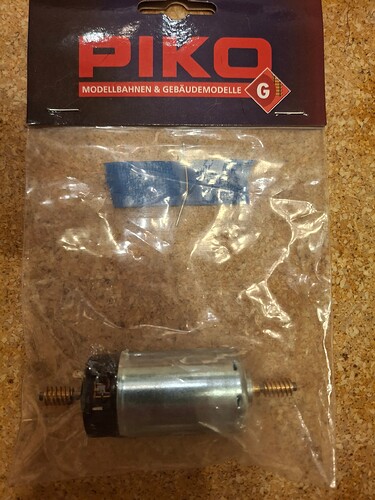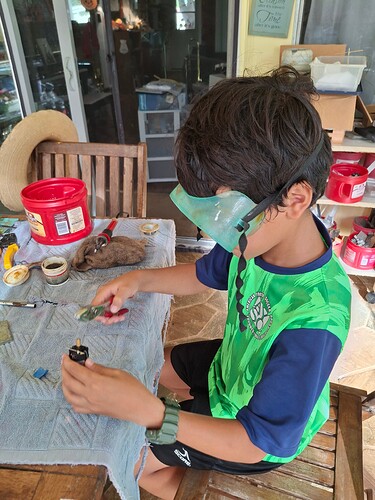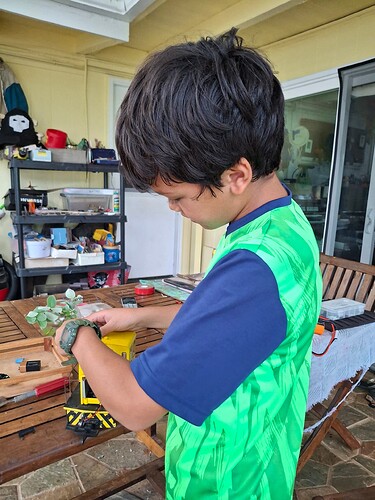The venerable Diesel Dan has been slowing down, getting fewer and fewer loops per charge until this year, the old boy just wouldn’t budge. This has been a favorite since hitting the Triple O ( PIKO Clean Machine – A Tropical Take), getting 2-3 runs a week with short trains until the middle of last year. The addition of a Magnetic Critter Controller ( Rehab of the Missile Sponges Part the First - Diesel Dan ) made this engine interactive and even more fun, and it probably the reason Kid-zilla grew from a toddler playing with trains to a boy becoming a model railroader.
We placed Diesel Dan on the Track of Perpetual Puttering as we attacked other projects. About two weeks ago, we tore him apart and began trouble shooting, asking for and receiving help from the folks at G-Scale Graphics and PIKO USA. I think we have a used up motor, but I wanted to share the finding and symptoms before ordering a replacement:
- The magnetic controller works. We were able to control a similarly sized motor using the controller. in addition, we were able to use test leads at the motor outputs on the controller to watch voltage rise and fall.
- It’s not the wires. We did test the wires between the controller and the motor.
- There was a lot of graphite dust in the motor block. We’re getting pretty good at breaking down and repairing motor blocks. This one is like a newer LGB block. There were visible piles of graphite dust on the deck, and there was some graphite dust buildup near the brushes.
- The motor resists hand turning. Our relatively new test motor spun easily when we spun it by hand. Diesel Dan’s motor resisted turning.
- The motor sometimes still responds to voltage. If we apply a 9 Volt battery straight to the motor tabs, it will turn, though sometimes we have to give the shaft a little spin. It generally will not work if wired into the control circuit. We noted if it stops or fails to start, we get 0 V across the terminals, which I would think indicates a short.
- The motor draws 0.3 Amps (when it works). PIKO said that 0.5 Amps would be sign of end-of-life, so this is likely non-diagnostic.
I am pretty sure that the motor is having issues, but, before I spend for a new one…
- Am I correct? Is this the motor?
- Is there a way to clean the motor’s internals? Somewhere I remember reading about a motor cleaning kit, where you stick the motor in some sort of solution and let it run?
- Has anyone modified the PIKO motor block to fit a BUEHLER motor? The latter is half the price of the PIKO part, but this does not look like a modification that can be done without some careful consideration and perhaps tools that we don’t own.
Thanks in advance!
Eric





